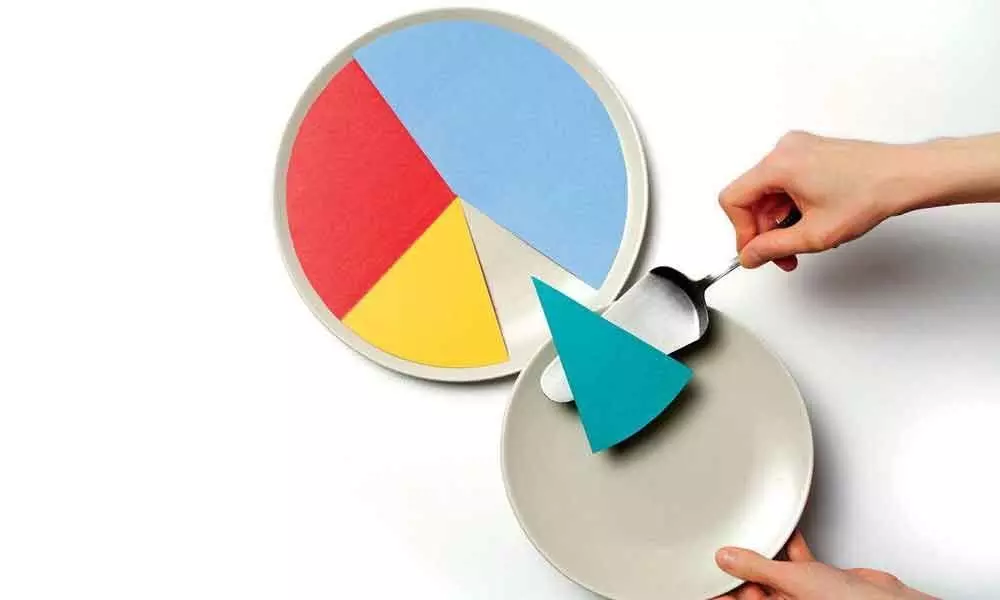Live
- 'Own interpretation developed': SC trashes pleas challenging insertion of 'Socialist', 'Secular' in Preamble to Constitution
- Gurugram: Three including two women held in murder case
- Afghanistan: Six killed as vehicle falls into river in Badakhshan
- Complete failure in handling the situation: Congress on Sambhal violence
- Crucial UN plastics treaty talks begin in South Korea
- Delhi govt re-launched senior citizen pension scheme despite challenges: Bharadwaj
- PKL Season 11: We're determined to push for top spot in standings, says Puneri Paltan coach BC Ramesh
- Awareness Program on the Harmful Effects of Tobacco Products
- Bihar Assembly's winter session begins, three newly elected MLAs take oath
- Inflation to ease, economic growth to accelerate in coming months: Finance Ministry
Just In
How side-pocketing in a MF scheme impacts investors


One must be wondering at the recent news flow in the mutual fund (MF) industry about side pocketing.
One must be wondering at the recent news flow in the mutual fund (MF) industry about side pocketing. Side pocketing is nothing but separating toxic or bad assets off from the overall portfolio so that the negative returns from the bad assets wouldn't adversely impact the entire portfolio.
This way the fund continues to operate normal while attracting fresh capital or inflows while the losses are restricted to the existing customers only.
Also, it avoids distributing undue gains to the new investors who participated in the scheme after the discovery of bad assets while ensuring the gains from any recovery of the bad assets are passed only to the existing customers who were side pocketed.
Debt mutual funds (MF) invest in securities across the spectrum depending upon the risk profile and objective of the fund. When a particular corporate fail to clear their loan or debt and even fail to service i.e. pay interest on their loan or NCD, the loan then is deemed as default.
Last few months, there's been news of corporate defaults especially on their debt repayments and so the downgrades on their issued paper or bonds. The trouble started with the default of NBFC (Non-Banking Financial Company) major IL&FS triggering and spreading the malice across various other companies including DHFL, Essel (Zee group) and now recently to Altico Capital and Reliance Capital.
Those schemes which have exposures to debt of these companies have taken a beating in their NAV (Net Asset Value) to the extent of the exposures.
So, by side-pocketing, the scheme allows all existing investors to receive one new unit in the side-pocketed portfolio, in addition to their existing units in the scheme. All new transactions are stalled in these new units i.e. the side-pocketed portfolio.
If one wishes to redeem the fund after the side-pocketing, is done, the NAV of the main portfolio is considered. As the scheme manages to recover any money (partial or full) from the defaulted borrower, a payout proportionate to the units of the side-pocket portfolio is passed on to the investor.
Debt MFs invest in debt instruments like Non-Convertible Debentures (NCDs) that are graded by independent rating agencies upon their quality, the debt servicing capability of the issuing corporate and the overall financial health of the issuer.
The ratings of these securities range between Triple A i.e. AAA and Default represented as D, the former being most safe while the latter is a dud or void. Some of these NCDs are traded on the exchanges and so could be a source of liquidity but not all are listed or even rated.
The MF schemes of the fund houses could hold debt instruments of a particular company or companies of a group which are neither listed nor rated.
In these cases, the health or solvency of these instruments depends upon the solvency and other fundamental factors of the group or company.
As per the SEBI regulations, MF schemes dealing with debt instruments are mandated to be invested in securities of BBB and above only.
These NCDs could be either listed or unlisted and the choice of investing in these depends upon the discretionary of the fund manager of the said scheme. So, whenever there is a change in the rating either upgrade or a downgrade, the rating agencies inform the regulator and the bourses, if listed.
And on the day a scheme decides to side-pocket an NCD or a bond, it's required to issue a press release along with sending a SMS and email to the investors. Simultaneously, all new purchases or sales of units in the scheme are frozen.
A haircut typically means the difference between the actual loan availed and the amount the borrower would be able to pay or is actual amount the lender could extract from the borrower.
(The author is a co-founder of "Wealocity", a wealth management firm and could be reached at [email protected])

© 2024 Hyderabad Media House Limited/The Hans India. All rights reserved. Powered by hocalwire.com






